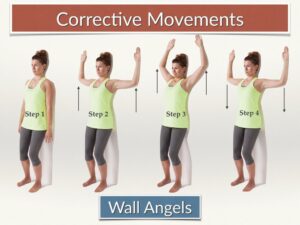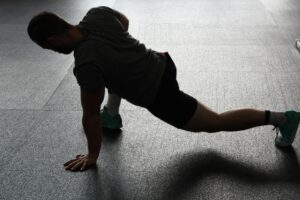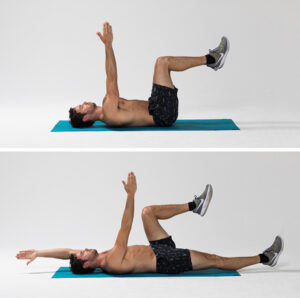One of the most common goals in chiropractic practice, especially for those seeking long-term structural change, is correcting spinal curves and retraining the muscles that support them. While chiropractic adjustments are essential for restoring joint alignment and function, exercises for curve correction and muscle adaptation help stabilize these changes, making your results longer-lasting.
Below, we’ll explore what curve correction means, how muscle adaptation works, and specific exercise strategies to support your chiropractic care plan.
What is Curve Correction in Chiropractic?
Your spine has natural curves that balance your head over your pelvis and absorb shock:
- Cervical spine (neck): gentle lordosis (inward curve)
- Thoracic spine (mid-back): kyphosis (outward curve)
- Lumbar spine (low back): lordosis
Poor posture, injury, repetitive stress, or degenerative changes can distort these curves over time. This may lead to:
-
Forward head posture
-
Hyperkyphosis or “hunchback”
-
Loss of lumbar curve (flat back)
-
Scoliosis (lateral curvature)
Chiropractic care aims to restore more optimal spinal alignment through adjustments, but lasting improvement also requires that muscles adapt to support that corrected alignment.
Why Muscle Adaptation Matters
When your spine loses its healthy curves, muscles often adapt in unhelpful ways:
-
Tightness in some areas (e.g., chest, hip flexors)
-
Weakness in others (e.g., deep neck flexors, glutes, core)
-
Altered movement patterns
Chiropractic adjustments help “reset” joint alignment, but if muscles are unbalanced, your body will tend to fall back into old patterns.
That’s why curve-corrective chiropractic care typically includes specific exercises to retrain and strengthen key muscle groups.
How Chiropractic Care and Exercise Work Together
Here’s how a typical curve-correction plan integrates both:
1️⃣ Assessment
Your chiropractor evaluates posture, spinal curves (via X-rays or posture scans), and muscle balance.
2️⃣ Adjustment
Chiropractic adjustments restore joint motion and help realign vertebrae toward a healthier curve.
3️⃣ Exercise Prescription
Customized exercises improve flexibility where muscles are tight and strengthen where muscles are weak, helping you hold the corrected curve.
4️⃣ Reassessment and Progression
Periodic evaluations track your improvement and modify your exercise plan as you adapt.
Example Exercises for Curve Correction and Muscle Adaptation
Below are general examples of exercises that can support curve correction. Your chiropractor will tailor them to your specific needs.
Chin Tucks (for Forward Head Posture)
-
Sit or stand tall.
-
Gently pull your chin straight back (not down) to make a “double chin.”
-
Hold 5 seconds. Repeat 10–15 times.
✅ Strengthens deep neck flexors
✅ Helps restore cervical lordosis
Thoracic Extension over Foam Roller

-
Lie on your back with a foam roller across your mid-back.
-
Support your head with your hands.
-
Gently extend backward over the roller.
-
Repeat slowly 10–15 times.
✅ Improves thoracic mobility
✅ Counters excessive kyphosis
Wall Angels
-
Stand with your back, head, and tailbone against a wall.
-
Arms at 90°, elbows and backs of hands touching the wall.
-
Slide arms overhead slowly, keeping contact with the wall.
-
Return. Repeat 10–15 times.
✅ Opens tight chest muscles
✅ Strengthens scapular stabilizers
Hip Flexor Stretch
-
Kneel with one knee down, the other foot forward.
-
Tuck your tailbone under slightly.
-
Gently shift forward until you feel a stretch in the front of the hip.
-
Hold 30 seconds. Repeat on both sides.
✅ Reduces anterior pelvic tilt
✅ Supports lumbar curve correction
Dead Bug/Core Stability
-
Lie on your back, arms and knees up (tabletop).
-
Slowly lower opposite arm and leg toward the floor while keeping your back flat.
-
Return to center. Alternate sides.
-
Repeat 10–15 times each side.
✅ Strengthens deep core stabilizers
✅ Supports lumbar lordosis
The Chiropractic Advantage

While these exercises can help anyone improve posture, doing them under the guidance of your chiropractor offers key benefits:
- Personalized plan for your spinal curves
- Progression and modification as you improve
- Integration with adjustments to hold alignment better
- Education on posture, ergonomics, and movement patterns
Chiropractic care isn’t just about making your spine move better; it’s about helping you live better. Combining adjustments with targeted exercises helps you get the most out of your care, reducing pain, preventing relapse, and empowering you to move with confidence.
Ready to Get Started?
If you’re looking to correct your spinal curves and retrain your muscles for lasting results, talk to your chiropractor about an integrated plan.
If you’re in Long Island NY, here at Catalyst Chiropractic in Smithtown, we specialize in curve-corrective chiropractic care with custom exercise programs. Schedule a visit today to see how we can help you feel and function at your best.
Disclaimer: This article is for educational purposes only and does not replace professional evaluation or treatment. Always consult your chiropractor or healthcare provider before starting a new exercise program.
Exercises for Curve Correction and Muscle Adaptation: Enhancing Results with Chiropractic Care






